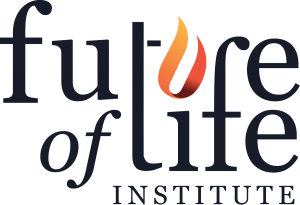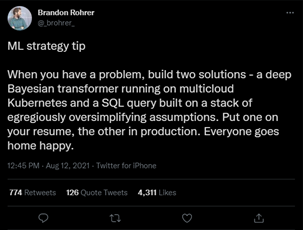At MM Guide I have worked on several AI projects. One of those projects involved writing our own AI framework based on a feedforward neural network using a backpropagation training algorithm. The platform allowed for expansion in different directions, one of which was adding more training algorithms. We added training methods like simulated annealing and genetic algorithms to the framework to test this expandability of the framework.
While AI is a very powerful tool, its use should be limited to instances where there is added value. One of the pitfalls of learning a certain technology is that you want to use it everywhere. When you learn of the hammer, everything looks like a nail. Using AI can add a level of complexity that could also be solved in a simpler manner. As data scientist Brandon Rohrer suggested:

This is not to say you should not use AI or ML. According to Microsoft there several ways enterprises are benefitting from AI.
- Improving common IoT-enabled applications
- Enhancing employee safety, patient care, and customer service
- Reducing complexity for developers and users
- Accelerating potential return on investment
And these are just the tip of the iceberg. With AI becoming more and more accessible through different tools, we can expect to see many good (and bad) initiatives in our time ahead.






